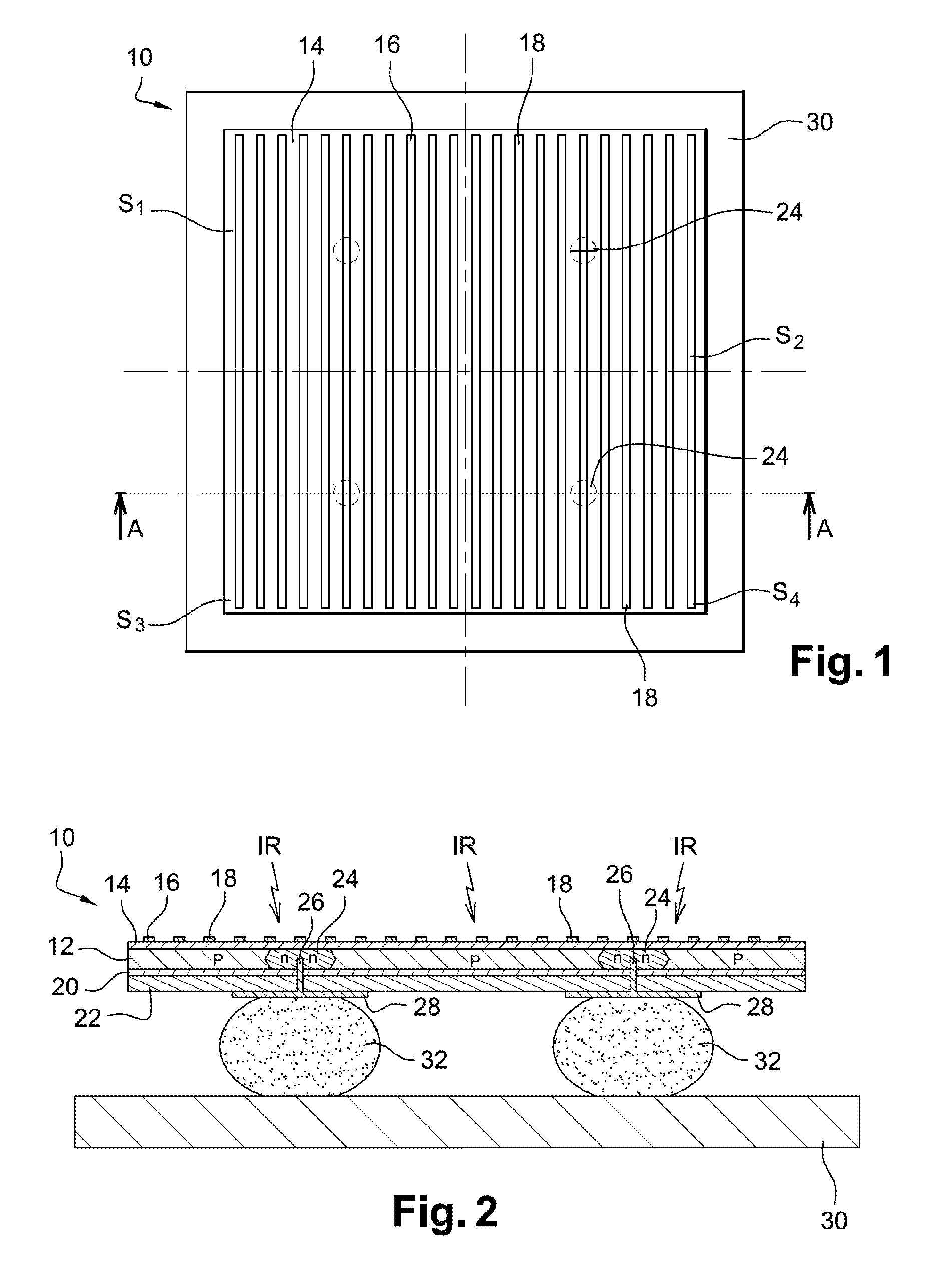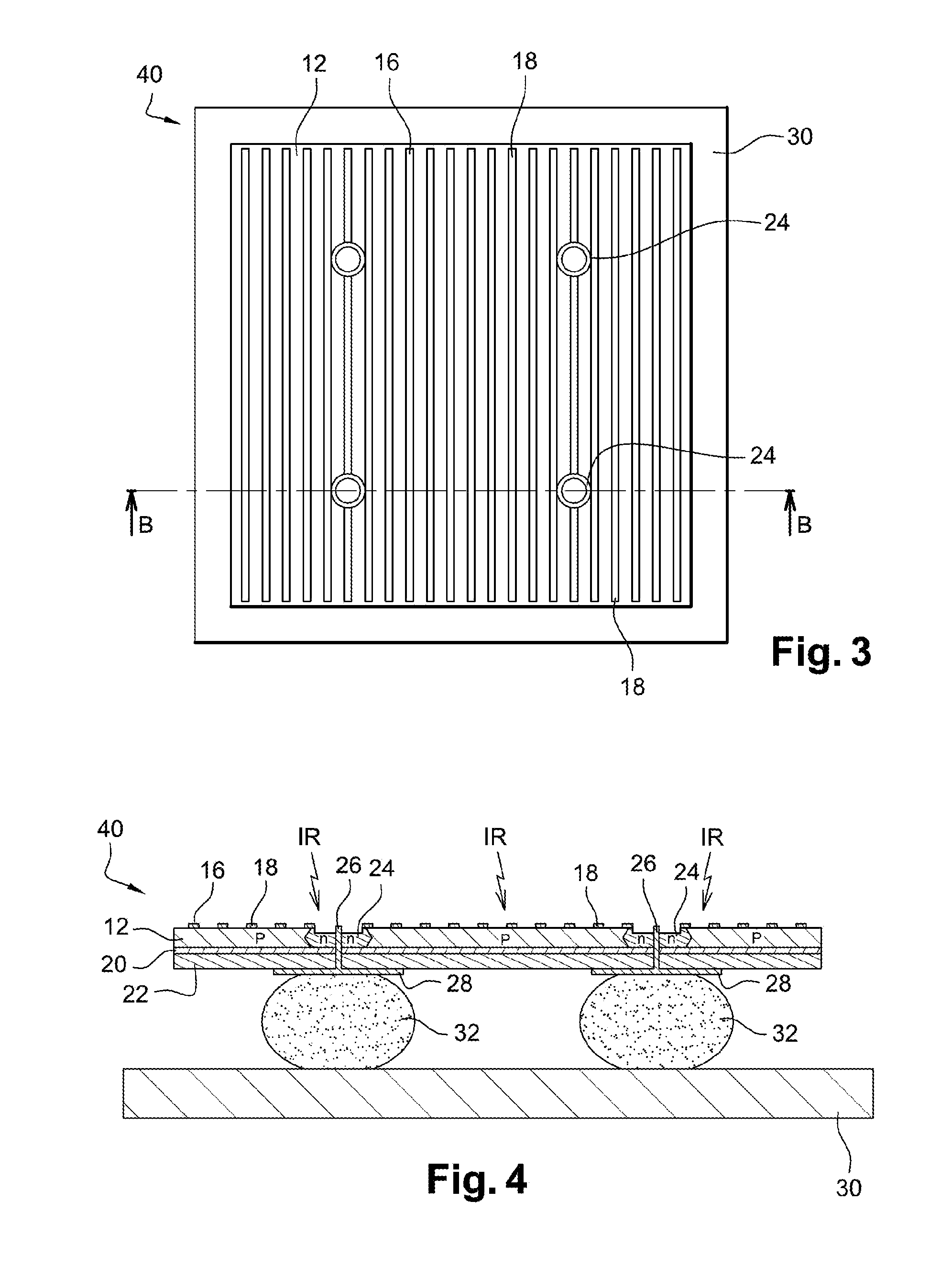Photodetector with a plasmonic structure
a plasmonic structure and photodetector technology, applied in the field of photodetectors with plasmonic structures, can solve the problems of inefficient plasmonic structures, expensive or even impossible to do, etc., and achieve the effect of effective electrical insulation of conductors and preventing electrical connections
- Summary
- Abstract
- Description
- Claims
- Application Information
AI Technical Summary
Benefits of technology
Problems solved by technology
Method used
Image
Examples
Embodiment Construction
[0029]A two-dimensional photodetector according to the invention is shown in FIGS. 1 and 2 under the general reference 10. This example shows a photodetector that comprises 2×2 pixels.
[0030]Photodetector 10 comprises a semiconductor absorption layer 12 that is several hundred nanometers thick wherein incident photons create electron-hole pairs; it is, for example, a p-doped semiconductor layer made of CdHgTe or CdZnTe in order to detect middle infrared radiation (wavelength of 3 to 5 μm) and / or far infrared radiation (wavelength of 8 to 10 μm); an insulating passivation layer 14 that is several dozen nanometers thick and deposited on semiconductor layer 12; a metallic structure 16, made of gold for example, formed by identical, straight, parallel metallic strips 18 having a rectangular cross-section. Structure 16, together with semiconductor layer 12, forms a surface plasmon resonator, as is known in itself from the prior art; a dielectric tuning layer 20 that is several dozen nanom...
PUM
 Login to View More
Login to View More Abstract
Description
Claims
Application Information
 Login to View More
Login to View More - R&D
- Intellectual Property
- Life Sciences
- Materials
- Tech Scout
- Unparalleled Data Quality
- Higher Quality Content
- 60% Fewer Hallucinations
Browse by: Latest US Patents, China's latest patents, Technical Efficacy Thesaurus, Application Domain, Technology Topic, Popular Technical Reports.
© 2025 PatSnap. All rights reserved.Legal|Privacy policy|Modern Slavery Act Transparency Statement|Sitemap|About US| Contact US: help@patsnap.com



